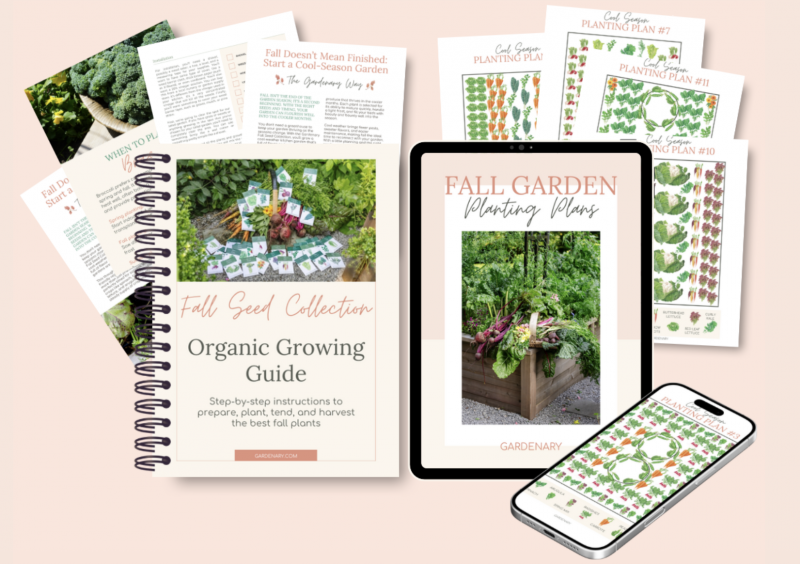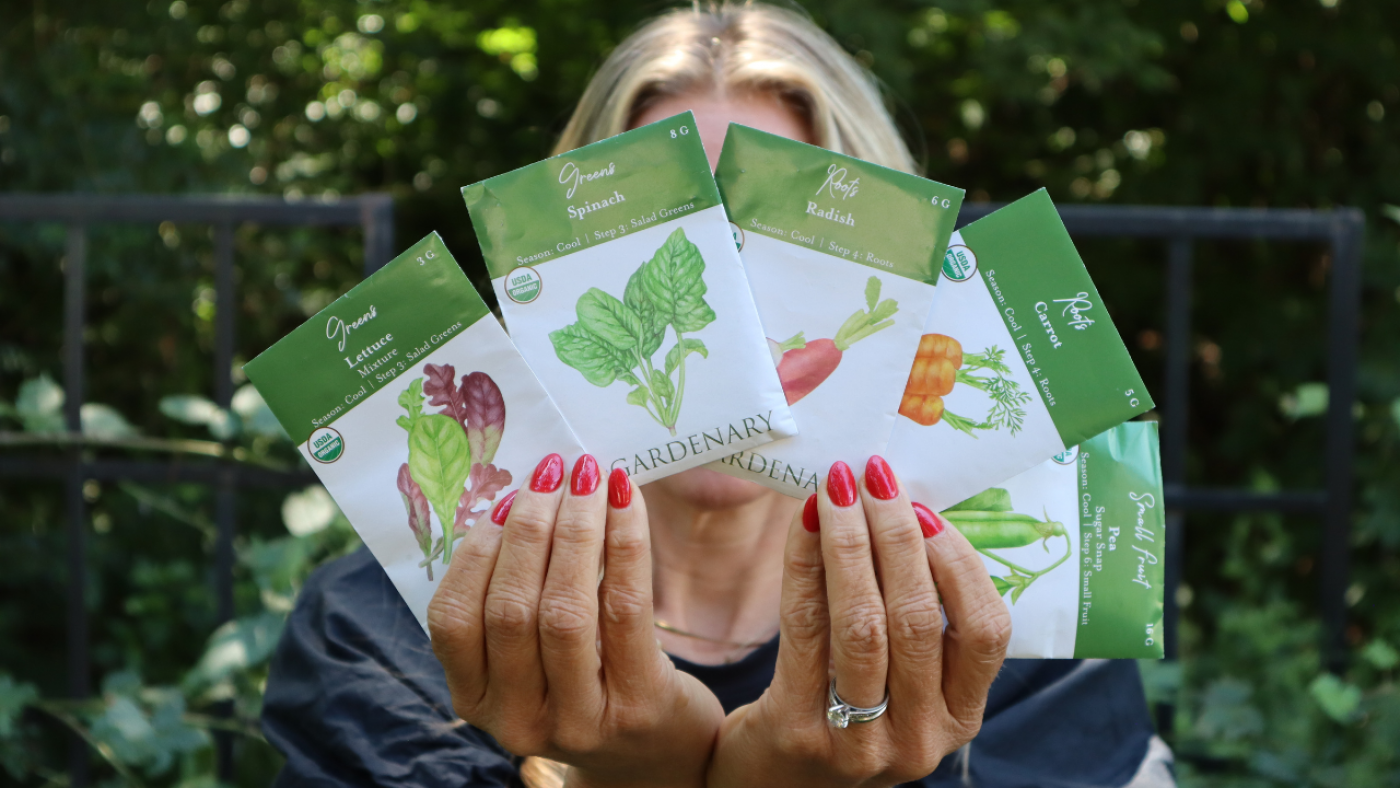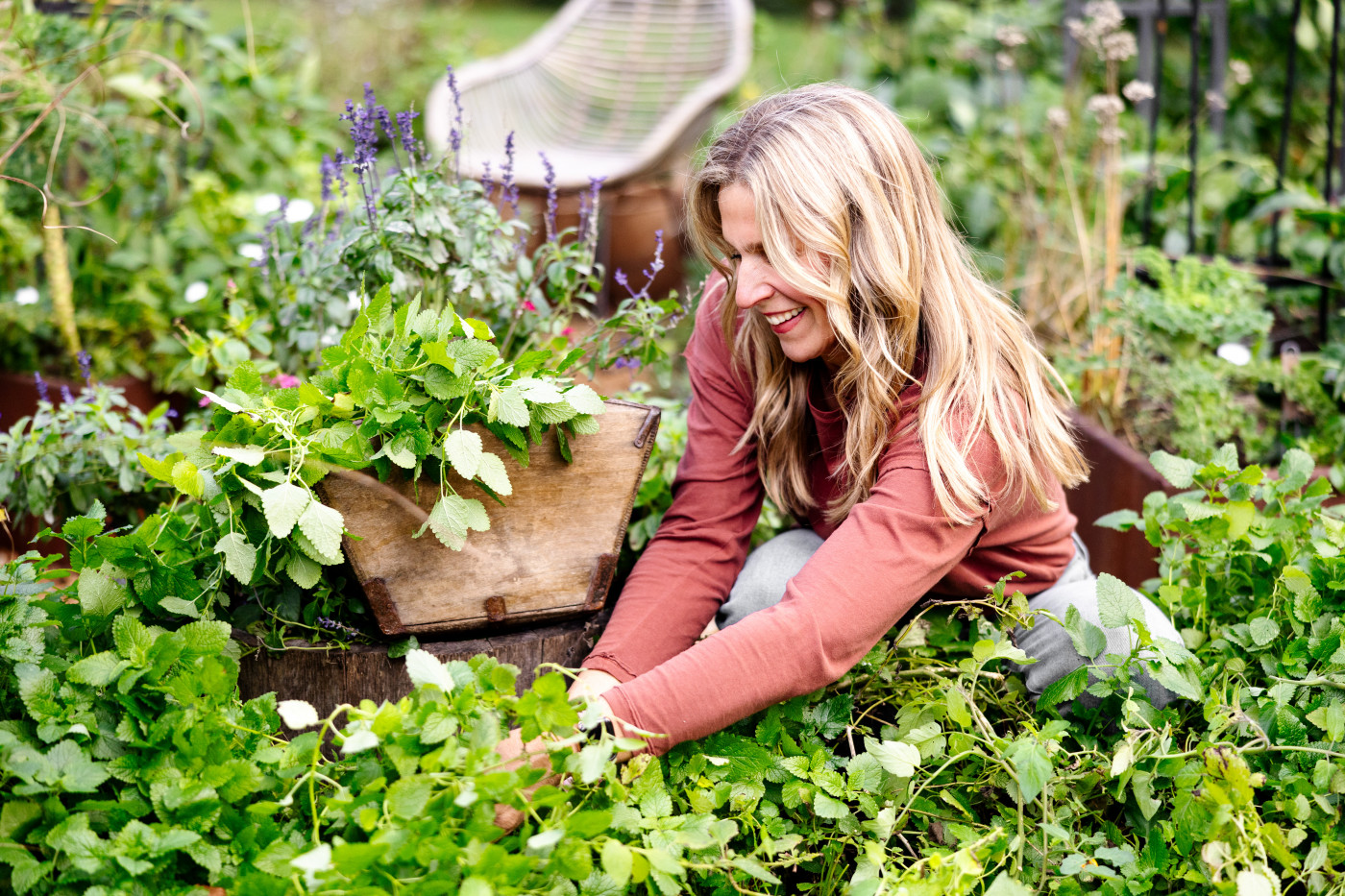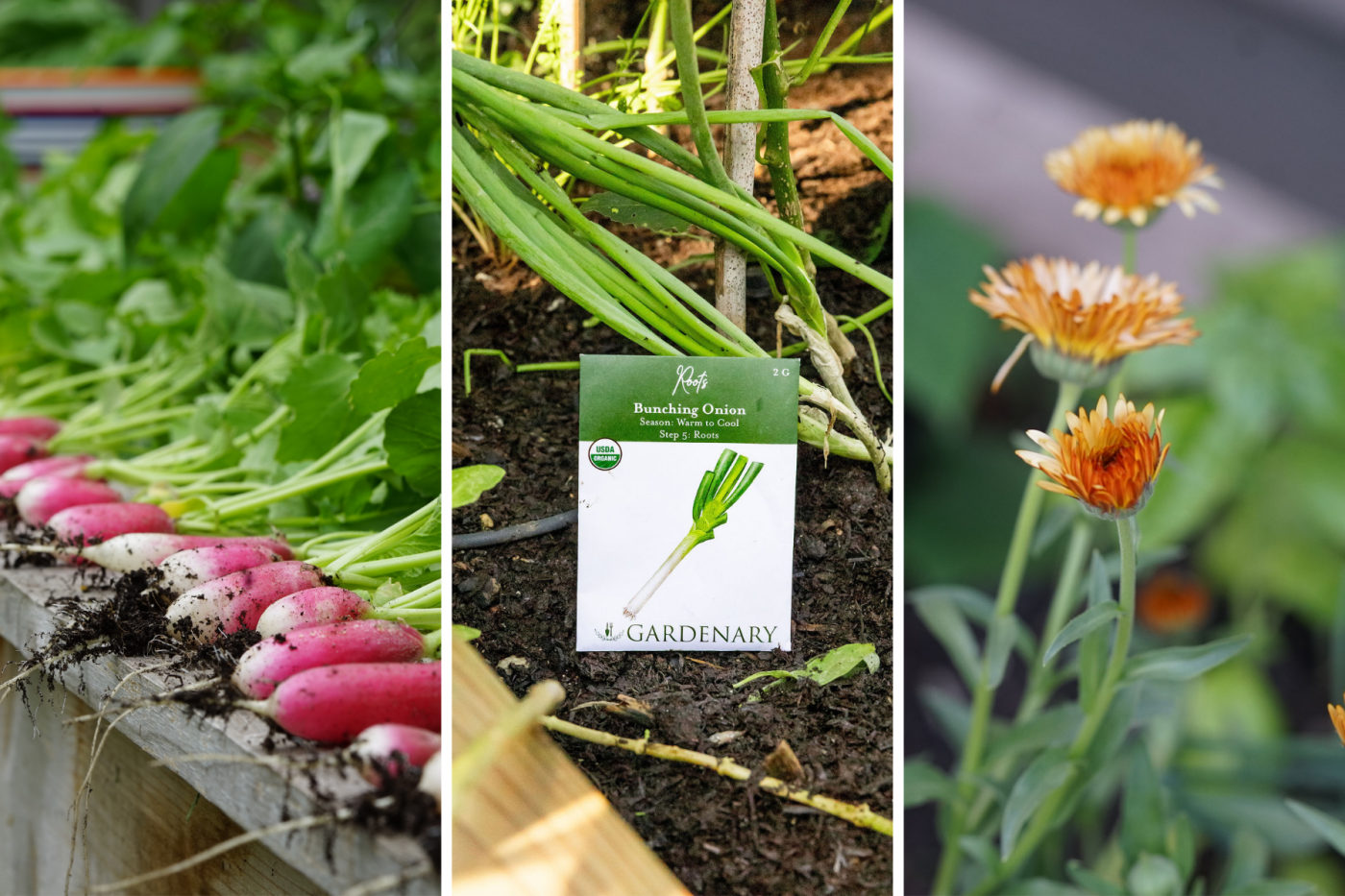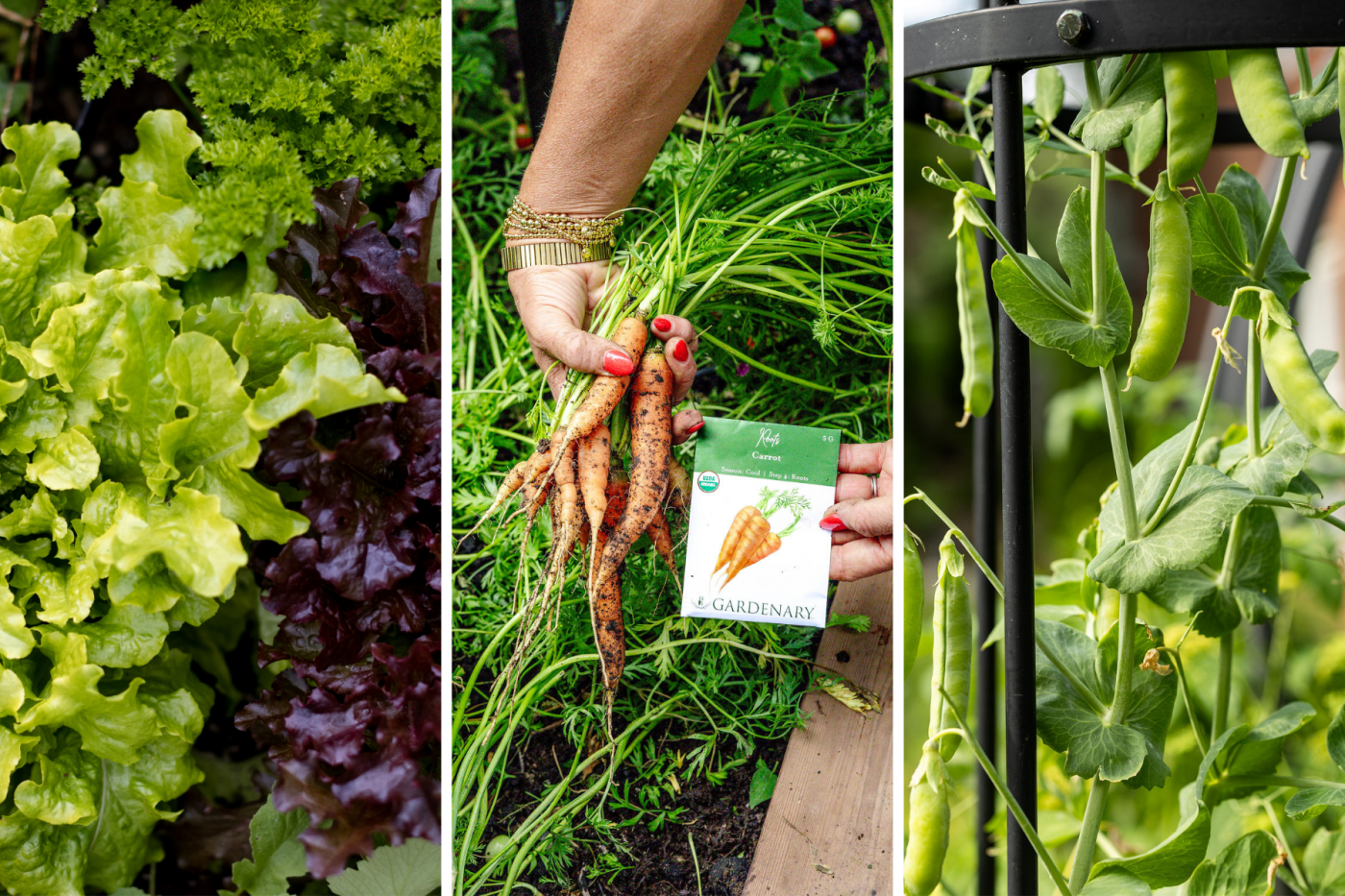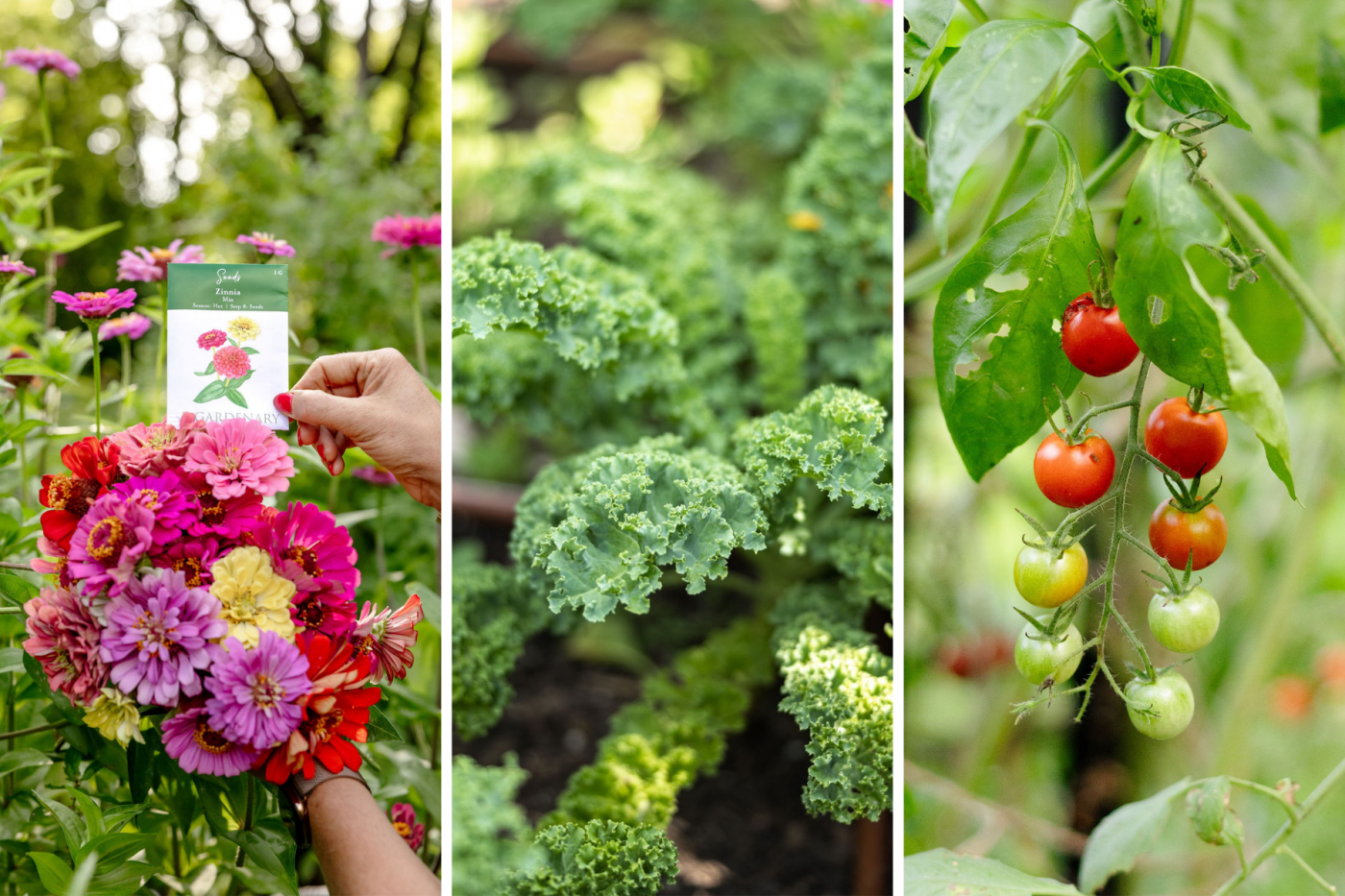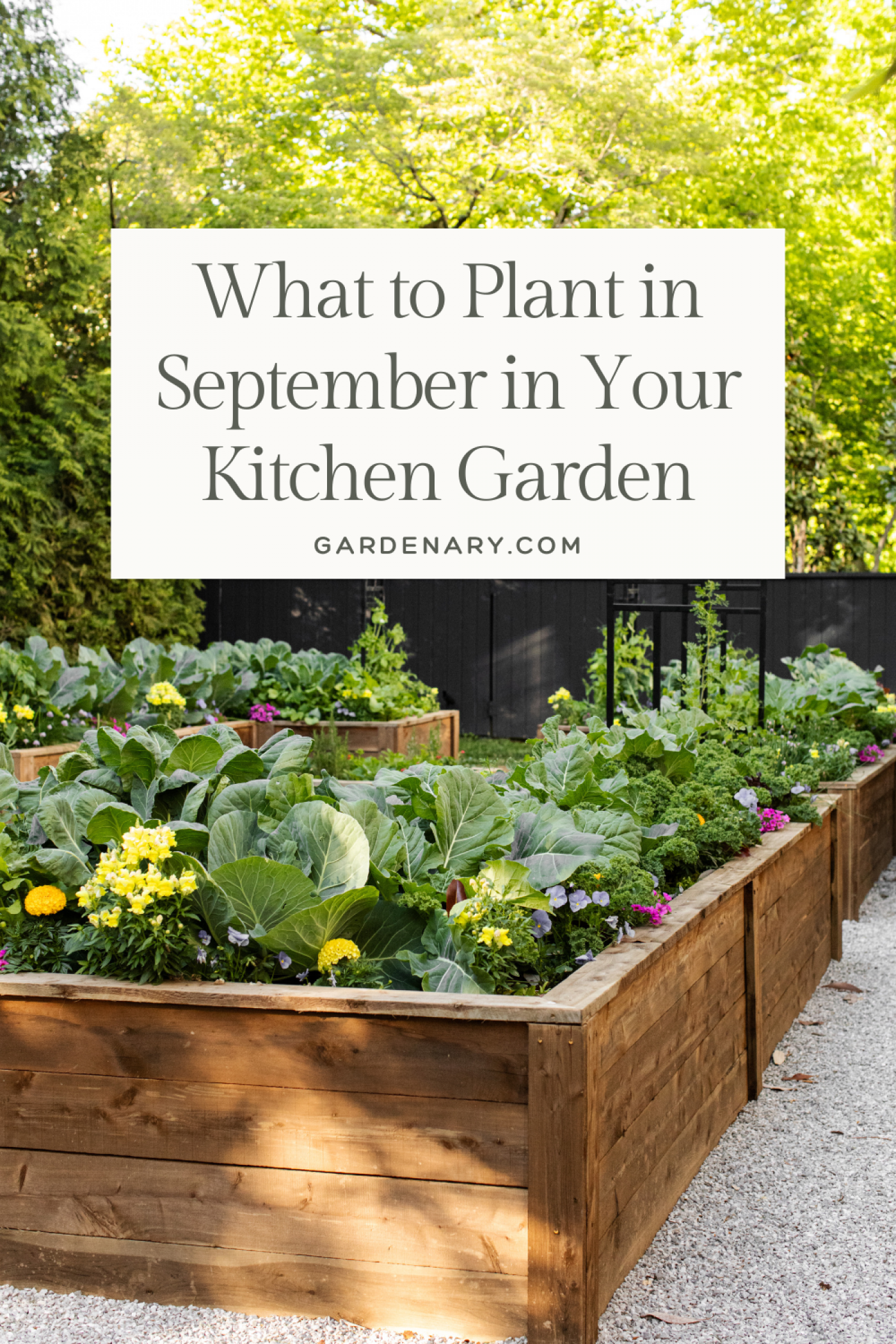Wait, Is It Too Late to Plant Vegetables in September?
I used to hear this question all the time. September marked that shift into fall—the season when many people began to think more about pumpkin spice lattes, cozy sweaters, and upcoming holidays than about their gardens.
But seasoned gardeners saw it differently. When I lived in Chicago, September carried a faint chill in the air, yet I never rushed to put my beds to sleep. Instead, I turned them over to lettuces, cabbage, and kale. It became one of my favorite gardening months, when I could head outside with a colander and harvest fresh leaves for a gourmet salad nearly every day.
Fall crops were always some of the easiest to grow and the quickest to reward: leafy greens, fresh herbs, and root crops like carrots, radishes, and beets—sometimes even garlic and onions. The key was choosing the right plants for the season.
So, no—it was never too late to plant vegetables in September. What mattered was understanding your growing season and matching your crops to your climate. That’s still true for me today here in Nashville, where the mild fall weather keeps the garden producing longer than it ever did in the Midwest.
At a Glance
- The top 5 plants to plant this month in a COLD CLIMATE are bunching onions, cilantro, lettuce, radish, and spinach.
- If you're in a MILD CLIMATE, you can plant things like carrots, lettuce, radish, spinach, and sugar snap peas.
- For those of you in a HOT CLIMATE it is the perfect time to plant dill, kale, lettuce, parsley, and swiss chard.


Start Your Garden the Easy Way
Get growing with 10 foolproof seed varieties, a 120-page gardening guide, planting plans, and step-by-step video lessons—all designed to help you succeed. The Easy Garden Kit makes it simple, fun, and affordable to bring fresh food and flowers to your backyard.
Can I Start a Garden in September?
Absolutely. In fact, September—and even October—has always been one of the best times to start. Waiting until spring meant missing out on two full seasons of growth and harvests that could have been enjoyed straight from the kitchen garden.
Back when I lived in Houston, we set up our raised beds in September. That timing gave us a warm fall season, a cooler winter season, and then another warm spring season to learn and grow. It turned out to be the perfect way to discover what thrived in that space without losing any momentum.
Now, here in Nashville, I appreciate the flexibility of a mild climate even more. September doesn’t feel like an ending—it feels like a beginning, a head start before the rush of spring arrives.
That’s why I always tell gardeners not to see September as “too late,” but instead to view it as one of the very best times to get growing.
What Seeds Can You Plant in September?
Some gardeners see August as the grand finale of the gardening year, a final flourish before everything winds down for winter. But in reality, nothing could be further from the truth. Across much of the country, some of the very best growing days are still ahead.
That said, we won’t all be planting the same vegetables in preparation for fall. It all depends on one key detail: when your first frost is expected.
If you haven’t already, take a moment to look up the average first frost date for your town or city. This simple step will help you determine exactly what you can grow this month. For gardeners in the United States, U.S. Climate Data is a great resource. If you're elsewhere, try searching RSS Weather or check with your local extension service.


Your Best Fall Garden Starts Here!
Unlock a 200-page guide packed with expert advice, easy-to-follow planting plans, and step-by-step tips. Learn exactly what to plant, when to plant it, and how to keep your garden thriving for bigger harvests all season long.
When Is Your First Frost Date?
If It's September or Early October
Frost is likely on the way soon if you're in a colder climate. That means your warm season, when daytime temperatures hover in the 60s, 70s, and 80s, is coming to a close. Now’s the time to get your cool season crops in the ground while the soil is still warm. Focus on fast-growing leafy greens, herbs, and root crops that thrive in the cooler temperatures ahead.
If It's Mid to Late October
If frost usually waits until late October, you're in a milder climate. You’ve still got some warm days left, but September is your golden window to plant both warm season crops that mature quickly and cool season favorites like lettuce, spinach, and radishes. It’s the perfect month to start transitioning your garden.
If You Won’t See Frost Until November or Later
Gardeners in warmer climates are just finishing up their hottest stretch—temperatures in the 90s and beyond are starting to fade. September is the ideal time to begin planting your second warm season garden. Focus on herbs, fruiting plants like tomatoes and peppers, and tender greens that appreciate milder heat. Hold off on cool season crops a bit longer.
Now that you know how your climate affects planting this month, let's dig into the best herbs, leafy greens, root vegetables, and fruiting plants to start from seed in September for a thriving kitchen garden all season long.
Cold Climate
What Can You Plant in Cold Areas in September?
Let’s begin with my gardening friends in colder climates—you’re probably eyeing the calendar and thinking your garden days are numbered as frost creeps closer. But here’s the good news: frost doesn’t mean it’s over. Not even close. September is actually a prime time to refresh your garden with cool season crops that thrive in chillier temps. Many of these plants can handle a light frost and will reward you with quick, satisfying harvests before winter truly sets in.
My top 5 plants to plant this month in a cold climate:
Here are the best herbs, leafy greens, roots, fruiting plants, and flowers to grow.
Herbs
Cilantro often struggles in the heat of summer, but September is its time to shine. Sow seeds now, and you’ll be harvesting fresh leaves for tacos, soups, and salads before October.
Parsley and dill also thrive in the cooler days ahead, giving you plenty of fresh flavor for your kitchen garden.
Leafy Greens
September is prime time for greens of all kinds. Arugula is one of the fastest to grow from seed and shrugs off light frost. When I gardened in Chicago, I filled my beds with arugula in late summer and harvested daily salads—even after the first frost.
Spinach also loves this season. While it takes a little longer to grow than arugula, it’s even more frost hardy. A light freeze actually makes spinach leaves taste sweeter. Sow both arugula and spinach this month to enjoy greens well into fall.
Kale and Swiss chard planted now (from seed or starter plants) will be ready in 45 to 60 days and will continue producing past your first frost. Lettuces like butterhead and spring mix are also perfect for a September sowing.
Don’t forget the heartier greens and brassicas. Mustard greens grow quickly, tolerate frost, and bring a peppery bite to your kitchen. Cabbage, broccoli, and cauliflower all thrive when planted now, maturing into the cooler season. While they take a little more time than arugula or lettuce, their resilience and productivity make them a fall garden favorite.
The Gardenary Cool Season Garden Planner
The secret to cool season gardening is knowing your timing, picking the right crops, and staying consistent—this planner walks you through it, step by step.
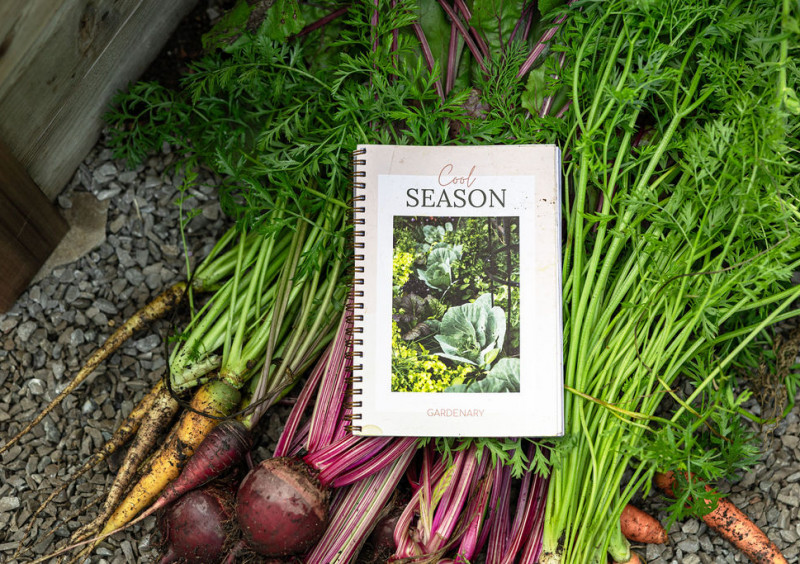
Roots
For speedy satisfaction, plant radishes. They’re ready in just 30 to 40 days, so you could be pulling your first harvest by mid-September—and still have time to grow another round before winter.
Other root crops that thrive in September include carrots, beets, and bunching onions. All three grow beautifully in cooler soil and develop even better flavor as the days get shorter.
Fruit
If you want a climbing, productive plant, sow sugar snap peas this month. They’ll be ready in about 60 to 75 days and do beautifully on a trellis. Snow peas and fava beans are also excellent September plantings for crisp, tasty pods later in the season.
Flowers
Calendula is a fall favorite. It grows quickly from seed, tolerates frost, and helps protect your garden from pests like aphids and cabbage worms. Within about 60 days, you’ll be enjoying bright, cheerful blooms. You can even harvest and dry the petals to make your own soothing calendula tea for the winter months.
Mild Climate
What Can You Plant in Warm Areas in September?
If you’re gardening in a mild climate, like mine here in Nashville, Tennessee, you still have a good stretch of warm season growing left. With average highs ranging from about 65°F (18.3°C) to 84°F (29.4°C), September is a wonderful month to keep your summer crops going strong. In fact, you can usually count on all of September and even part of October to continue enjoying warm season harvests.
As you move toward the end of the month, it’s smart to begin tucking in a few frost-tolerant plants so they’re ready to thrive as cooler weather sets in.
My top 5 plants to plant this month in a warm climate:
Now, let’s take a closer look at the best herbs, vegetables, and flowers to plant in September.
Herbs
September is a fantastic month to sow cilantro, parsley, dill, and even basil from seed. Basil will wrap up once the first freeze arrives, but cilantro, parsley, and dill can keep producing as the temperatures cool. To keep cilantro and dill especially happy in these last warm weeks, give them a bit of afternoon shade.
This is also the perfect time to plant hardy perennial herbs so they can establish strong roots before winter. Add rosemary, thyme, and sage to your garden now, and they’ll reward you by coming back season after season. These sturdy herbs not only handle cooler weather well but also bring rich, savory flavors to fall and winter cooking.
Leafy Greens
If you love fresh salads, September is your moment. Lettuce thrives in this season, and the flavor is incomparable to store-bought. I’m planting plenty of butterhead lettuce right now, but any mix of leafy lettuces will fill your beds with tender, tasty greens.
Arugula is another fast-growing favorite that doesn’t mind the chill. If warm weather lingers, you may need to reseed, but once it takes off, it will keep you in fresh greens well past the first frost.
Don’t forget the sturdier greens, too—kale and Swiss chard are both excellent September crops. Since they’re biennials, they can live through the cool season and into the next year before they flower and set seed. Go ahead and plant them even if your weather hasn’t cooled much yet—they’ll adapt beautifully.
Roots
By the end of September, you can start sowing root crops like carrots, radishes, and beets. For best results, tuck the seeds beneath taller plants like peppers, kale, or eggplant to give them a little shade as they sprout. Root vegetables prefer cooler soil, so shade helps them germinate and grow strong.
Don’t stress about frost—carrots, in particular, are very cold hardy. I’ve planted carrot seeds in the fall and pulled sweet, delicious roots the following spring.
Fruit
If you’re looking for something quick, you still have time to tuck in bush beans before frost. They take about 60 days to mature, which makes them perfect for filling empty garden spaces as you transition from summer crops to fall plantings.
To set yourself up for a productive cool season, plant sugar snap peas now. Direct sow the seeds, and in about 60 to 75 days, you’ll be harvesting crisp, sweet pods. Be sure to give them a strong trellis to climb as they grow.
Flowers
Round out your September garden with nasturtiums. These cheerful blooms love cool weather but can’t handle a hard frost, so planting them now gives you weeks of vibrant fall color. As a bonus, nasturtiums act as a natural trap crop, drawing pests away from your lettuces, carrots, and peas.
Hot Climate
What Can You Plant in Hotter Areas in September?
In hot climates, September marks the start of your second warm season of the year—before the cooler months arrive. This is the perfect time to grow classic kitchen garden favorites like vining tomatoes, peppers, cucumbers, and plenty of herbs. Think of it as a fresh chance to enjoy another round of the same crops most gardeners associate with summer.
My top 5 plants to plant this month in a hot climate:
These greens and herbs thrive as the intense summer heat begins to ease, setting you up for abundant harvests through fall.
Now let’s explore the best leaves, roots, fruits, and flowers you can plant in September to carry your garden through the tail end of the hot season and into the next.
Herbs
September is a wonderful month to plant fresh herbs in warm climates. Parsley and dill are quick growers that thrive as the heat begins to ease. You can also tuck in basil from transplants for one last flavorful harvest before frost.
When daytime temperatures drop consistently into the 80s, it’s the perfect time to add perennial herbs. Plant oregano, rosemary, thyme, and sage now so they have time to establish strong roots before winter. These herbs are tough, flavorful, and will return year after year once settled into your garden.
Leafy Greens
Even in the heat, certain greens will keep on growing. Arugula sown from seed is quick, reliable, and happy to be reseeded if it bolts. Swiss chard and kale do well from seed or transplants and will carry on through the cooler months ahead.
For something unique, try mizuna. Its frilly, purple leaves bring color and texture to your garden, and its mild, peppery flavor makes it a versatile kitchen green
Roots
In warm climates September is a great time to plant potatoes. They grow well when planted this month and will reward you with a hearty harvest later in the season.
Gardenary's Warm Season Garden Planner
This beautifully designed planner takes the guesswork out of gardening and helps you stay organized, inspired, and on track during the warmer months.
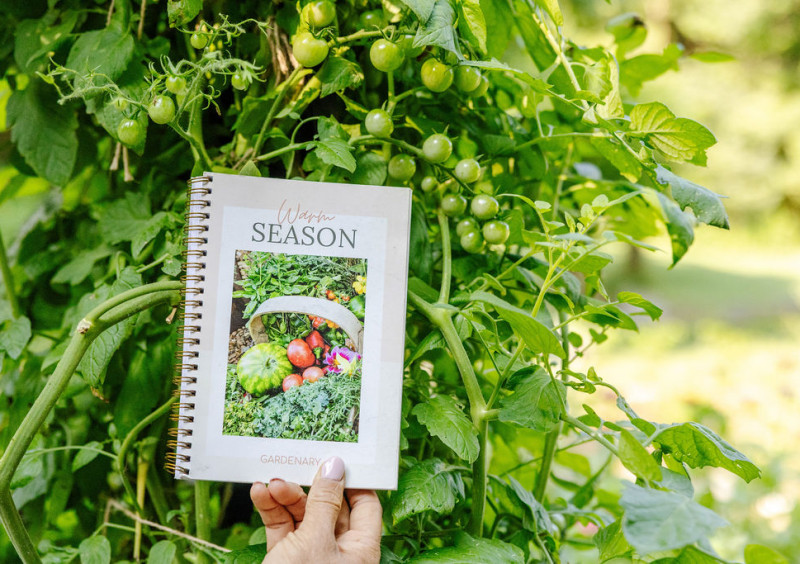
Fruit
This is your chance to plant another round of all the classic “summer crops.” From seed, sow bush beans, short-season vining cucumbers, and 60-day squash or zucchini. These fast growers will mature quickly, rewarding you with harvests well into the fall.
If you’d like to grow tomatoes or peppers, start with transplants instead of seed this late in the season. Cherry tomato varieties that produce in 50 to 60 days are ideal, as well as smaller pepper plants that can set fruit before frost.
Flowers
September is still bursting with opportunities for blooms. Sow nasturtiums from seed for cheerful fall flowers that also act as a natural pest trap for your vegetables. You can also scatter seeds for zinnias, marigolds, cosmos, calendula, strawflowers, and coreopsis—all of which thrive in warm weather and will keep your garden colorful into fall.
For long-lasting beauty, pair these annuals with perennial herbs like rosemary, thyme, and sage planted as transplants now. They’ll add structure and fragrance while your flowers bring vibrant seasonal color.


Start Your Garden the Easy Way
Get growing with 10 foolproof seed varieties, a 120-page gardening guide, planting plans, and step-by-step video lessons—all designed to help you succeed. The Easy Garden Kit makes it simple, fun, and affordable to bring fresh food and flowers to your backyard.
Plant These Vegetables in September to Keep Your Garden Growing!
And there you have it! September is full of opportunities to fill your beds with fresh herbs, leafy greens, root crops, fruiting plants, and flowers. Whether you’re in a hot, mild, or cold climate, there’s still plenty of time to sow seeds and tuck in transplants for harvests that will carry you well into fall.
Frost on the horizon doesn’t mean your garden season is over—it simply means it’s shifting. With the right plants, September can be one of the most abundant and exciting months in your kitchen garden.
I can’t wait to see everything you plant this September!
More Resources to Prepare for Fall Gardening
- Grab our Cool Season Garden Planner (this is perfect for fall for those of you in cooler climates and will take you through the winter months if you're in a warmer climate).
- Shop our Fall Seed Collection to get our curated batch of the best herbs, leafy greens, and veggies to grow in the fall.
- Grab our Fall Planting & Growing Guide to get planting, tending, and harvesting guides for 25 fall plants, plus 11 done-for-you planting plans.
- Watch our free Fall Garden Workshop and learn a simple 3-step system to plan, plant, and harvest the garden of your dreams.
Gardenary's Fall Garden Guide
Spring gets all the attention, but fall is actually the ideal time to start your kitchen garden. Get expert guidance, done-for-you layouts, and step-by-step tips to help you plant smarter, grow healthier crops, and harvest more—right through fall.
